I’ve been looking forward to using the new SSIS OData Connector for SQL 2012 since first hearing about it at Project Conf last month, Paul Mather wrote up a great step-by-step guide on getting it all up and running here so have a look at that if you haven’t yet.
However the devil is always in the details! Creating a simple report combining Project data and SharePoint site data is not as straight-forward as you might hope.
Reporting custom project site list data from ProjectOnline
Possibly the most common customer request I get when it comes to reporting is the need to report against non-standard Project site list data, something that was simple using SSRS 2008 R2 but made impossible in ProjectOnline, until now that is.
Following on from Paul’s post, in order to do this you’ll need an SSIS package that does the following:
- Retrieve Project Data from the ProjectOnline OData endpoint: /_api/ProjectData
- Get a list of Project Site URLs from the data and save it in a variable
- Loop through each Project Site and retrieve data from the SharePoint endpoint: /[ProjectURL]/_vti_bin/listdata.svc after dynamically updating the [ProjectURL]
Also you’ll notice there in step 3 I use the listdata.svc endpoint rather than the REST endpoint (e.g. /_api/Web/Lists/getbytitle(‘Risks’)/Items), if you followed Paul’s steps above and tried to retrieve the site list data then you probably are seeing the following error when building the connection:
Error message:
Test connection failed while parsing the XML document because it is not a valid OData service document.
If you’re seeing that message it is because the SSIS connector is expecting a ‘service document’ and not the actual OData feed. Not sure why the SharePoint REST endpoints don’t also have a service document at the root but we can work around it by using the listdata.svc.
Finally once we have the list of all of the Project site URLs then we need to update the Data Connection URL before we retrieve the site list data. I’ll cover all of these steps below.
Requirements for building the SSIS package
Paul Mather’s blog covers the basic setup, so I won’t cover that in detail but in summary to create / use the solution below you will need:
- SQL Server Integration Services 2012
- SQL Data Tools 2012 (the BIDS replacement on the SQL DVD)
- Microsoft® OData Source for Microsoft SQL Server® 2012
- SharePoint Server 2013 Client Components SDK
- An empty SQL database to write to, I’m going to use one called ProjectOnline_OData
You can run Data Tools on your client but the rest must be installed on the SSIS server.
Creating a SSIS package to retrieve site custom list for all projects
Create a new SSIS package and to start by adding the following Connection Managers:
- OLE DB Connection which points to your SQL database: e.g. ProjectOnline_OData
- An OData Connection pointing to the ProjectData OData service: e.g.
- An OData Connection pointing to the SharePoint ListData.svc OData service of an existing project site: e.g. Test%20Project/_vti_bin/listdata.svc
Make sure that each connection test’s successfully, and give them descriptive names which will be used later. I’m using OData_ProjectData and OData_SharePointListData for the last two and note that both names will be referenced below.
A note on security
The account used to authenticate with our OData connections must be a ProjectOnline user, and specifically it must have access to all projects and project sites. In order to do this easily I have added the users ([email protected]) to the following:
- Project Web App Administrators
- Site Collection Administrators
Adjust as you see fit.
Retrieve project data from OData
Now that we have our data connections we need to first get our Project data (and optionally any other data such as tasks), then prepare to get our project site data.
- As per Paul’s blog create a Data Flow task with an OData Source (OData_ProjectData) which points to the Projects collection.
- Ensure that you select only your required Columns, however you must include the following as a minimum: ProjectId & ProjectWorkspaceInternalUrl.
- Use the Destination Assistant to create the destination database
- Create a new table to store the data in (I’m using the name Projects) and configure your mappings
- Optionally you could add other Data Flow tasks in there to get Tasks or other data into additional database tables, but only using the OData_ProjectData connection at this point.
So now you should have a solution that runs and looks something like this when debugging:

Also if you started with Paul’s blog, then this is where those steps end.
Prepare to loop through all project sites
In order to get the site list data for each project in PWA we need to first save a temporary variable with a list of all ProjectWorkspaceInternalUrl‘s.
- In your solution on the Control Flow tab add another Data Flow Task. Link the green arrow from the previous task to this one (so runs 2nd)
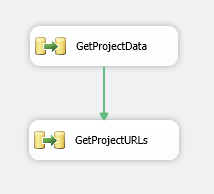
- Add an OLE DB Source to the Data Flow using the Source Assistant
- This source will be configured to get project url’s saved into our database in the last step using the following SQL command:
SELECT ProjectId, ProjectWorkspaceInternalUrl FROM Projects WHERE (ProjectWorkspaceInternalUrl IS NOT NULL)
So it looks like;
Create a temporary variable to store URLs
- Open the Variables window in Visual Studio (it’s one of the icons top right above the package area.
- Add a variable called ProjectList and set the Type to Object
- Now add a Recordset Destination to the data flow and link the blue arrow from our OLE Source to it
- In the advanced properties specify the VariableName just created.
- On the Input Columns tab select all columns
All other settings can be left with defaults. The Data Flow task should now look like this;

Create a Foreach loop to iterate through sites
Now we’re getting to the tricky part, SSIS enables this kind of iteration nicely, however we need to do a couple of special things to work with our OData list data, specifically update the datasource URL to the next project and extend the returned data by adding the ProjectId field of the project (for our FK).
- Firstly add two new Variables to the package; ProjectId and ProjectUrl, both as type String

- Next drag in a Foreach Loop Container and connect the green arrow from the previous item to it
- In the Collection properties of the Foreach Loop select Foreach ADO Enumerator and specify the User::ProjectList variable created earlier
- Next under Variable Mappings specify our other variables in the following index order: Index 0 – User:ProjectId, Index 1 – User::ProjectURL, (Note this order is important and used in the Foreach below!)
Update the SharePoint Listdata datasource URL
The first action inside our Foreach loop must be to update the connection string property of our SharePoint listdata dataconnection created at the beginning. Don’t run away but we’ll do this using a Script Task and a few lines of code.
- Drop a Script Task inside the Foreach loop container
- In the properties make sure the ScriptLanguage is Visual C# 2010
- Then add a ReadOnlyVariable pointing to User::ProjectUrl
- Click Edit Script and we’ll be replacing the Main() block with the following code:
public void Main()
{
// TODO: Add your code here
String ProjectURL = (String)Dts.Variables[0].Value;
Dts.Connections["OData_SharePointListData"].ConnectionString =
System.Text.RegularExpressions.Regex.Replace(
Dts.Connections["OData_SharePointListData"].ConnectionString,
"https://.*(?=/_vti_bin/listdata.svc)",
ProjectURL);
Dts.TaskResult = (int)ScriptResults.Success;
}
IMPORTANT NOTE: In that code we reference the OData_SharePointListData connection by name which we created way back in the first step! So if you used another name make sure you update both references to that name in the code.
Save and close that script window and we can move on to the last couple of steps.
Getting project site data from each site
- Add a Data Flow Task after the script task inside the Foreach loop container, and link the green arrow from the script task to the data flow task
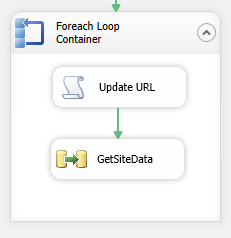
- In the Data Flow tab for this item, first add an OData Source
- Configure the source using the OData_SharePointListData source created and specify the required collection (I’m using Risks for the sake of this demo)
- Select the desired columns and preview to test
Note here that I’m able to see the values in the test project site that I specified right back at the beginning, however when the solution executes the URL will have been updated before this step. Whenever you edit this solution in the future this site must be valid and accessible else you will get errors here.
Next we need to add our project server ProjectId to the data coming from OData so we can use it is a foreign key in the destination database table.
- Drag a Derived Column to the canvas link it 2nd and edit the properties
- Add a Derived Column Name as ProjectId
- From the Variables and Parameters drag the User::ProjectId into the Expression box
- Lastly (importantly) from the Type Casts list drag the (DT_GUID) item to the start of the expression so it is exactly: (DT_GUID) @[User::ProjectId]
- Now finally use the Destination Assistant to create and configure our Risks database table where the data will be saved
- Configure the mappings as required, and double check that ProjectId has automatically been mapped
We’re just about done, that Data Flow should now look like this:

Final touches
The solution should now run and work as expected, with only one catch, each time you run it it will append all of the data again, so for a quick (hackish) solution to that the final step here is to add a step to the very beginning to delete existing data in our report database.
- On the Control Flow tab add one more Execute SQL Task to the top of the canvas and make our first GetProjectData follow it.
- Edit the properties and select our temp database ProjectOnline_OData as the Connection
- Then set the following as the SQL Query (Note: Don’t use Build Query as that won’t let you cut and paste, just paste it into the SQLStatement field
DELETE FROM Projects WHERE 1=1 DELETE FROM Tasks WHERE 1=1 DELETE FROM Risks WHERE 1=1
- No other options need be changed
Done, test it out and it should run and look something like this when run:
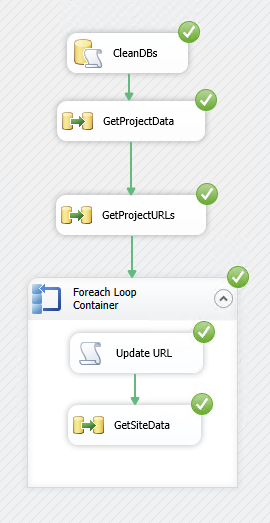
Final words
That was easy, wasn’t it? Aren’t we all glad to not need the SSRS SharePoint list datasource anymore! *ahem* [sarcasm]
Well now that you have your data-warehouse of project data and all artifacts, that should make your SSRS report writing not only simpler but actually much faster performing.
Download Source
Download this full solution here and any post any questions below.
To use this you will need to update all your data-connections and recreate the destination Tables (as per steps above).

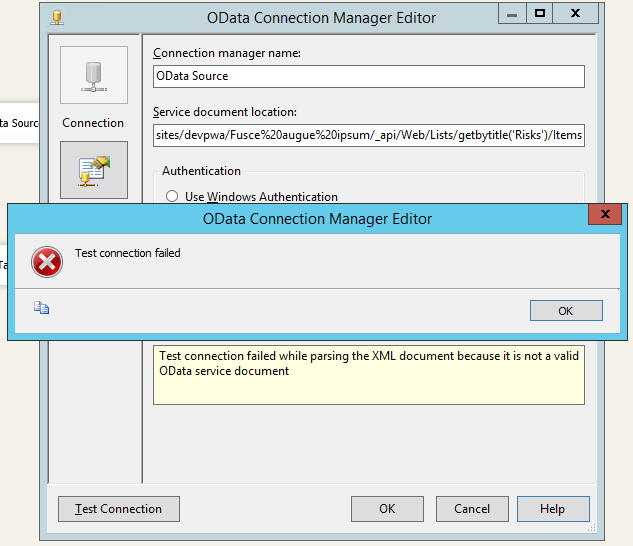
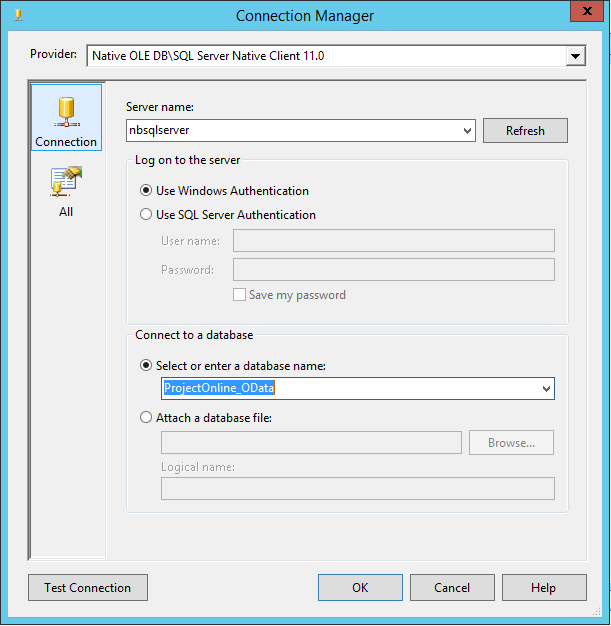
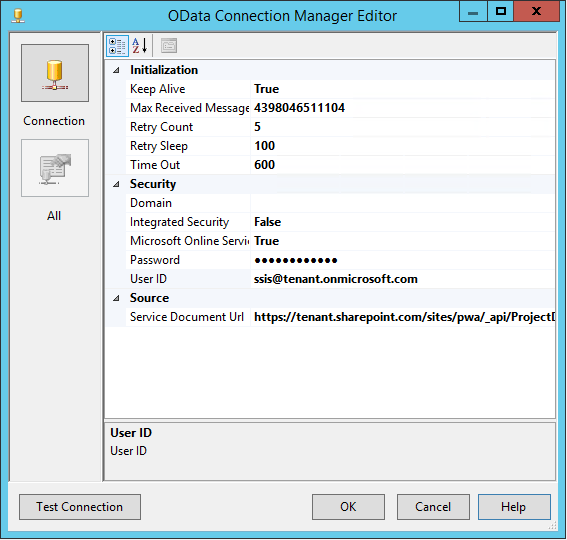
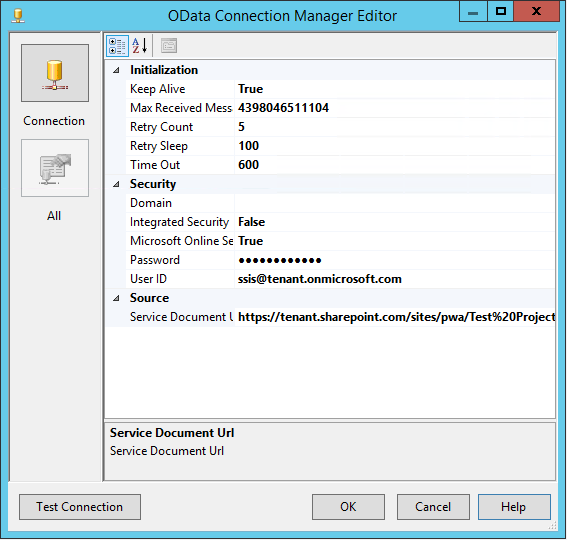
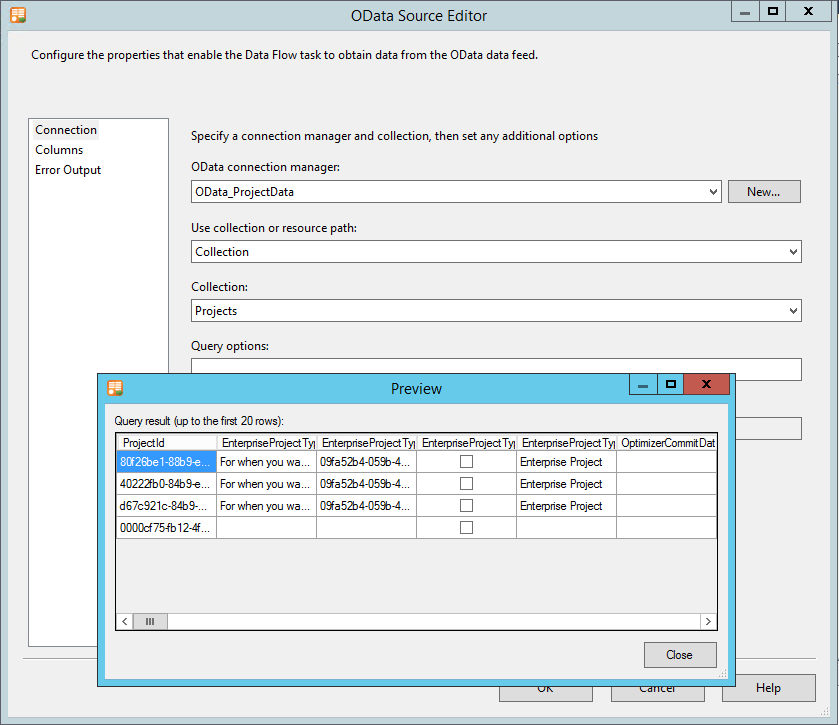
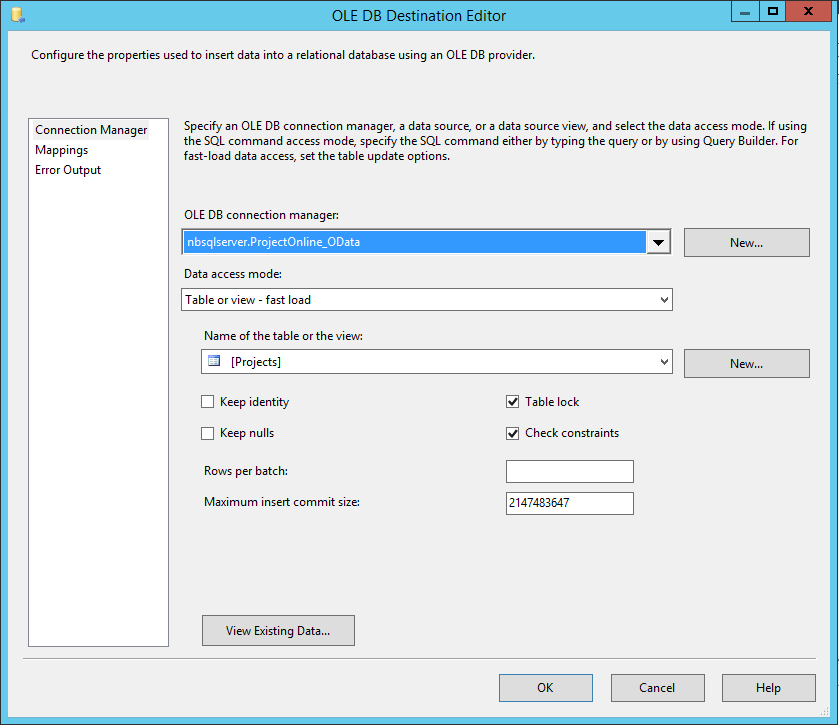
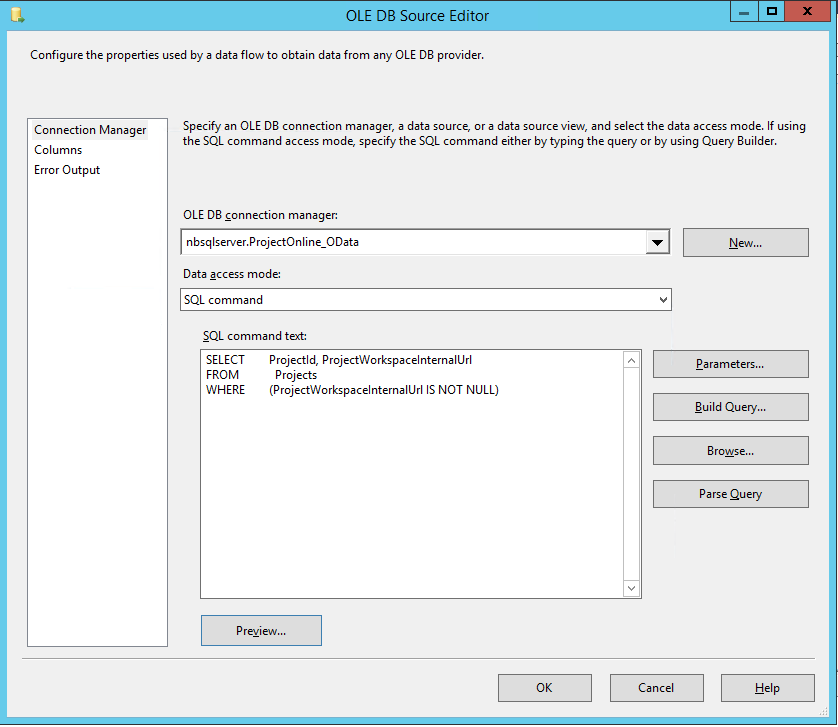

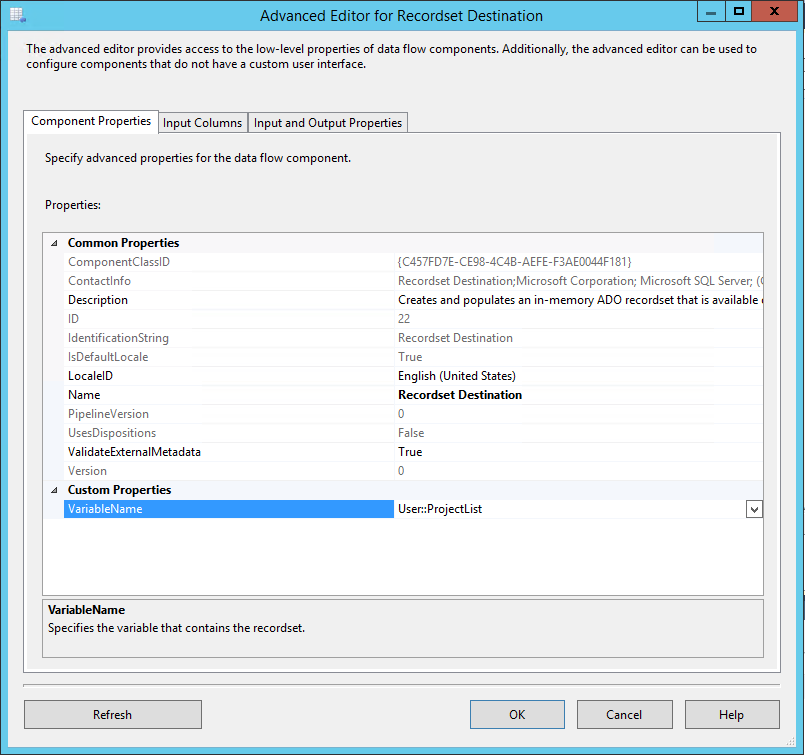
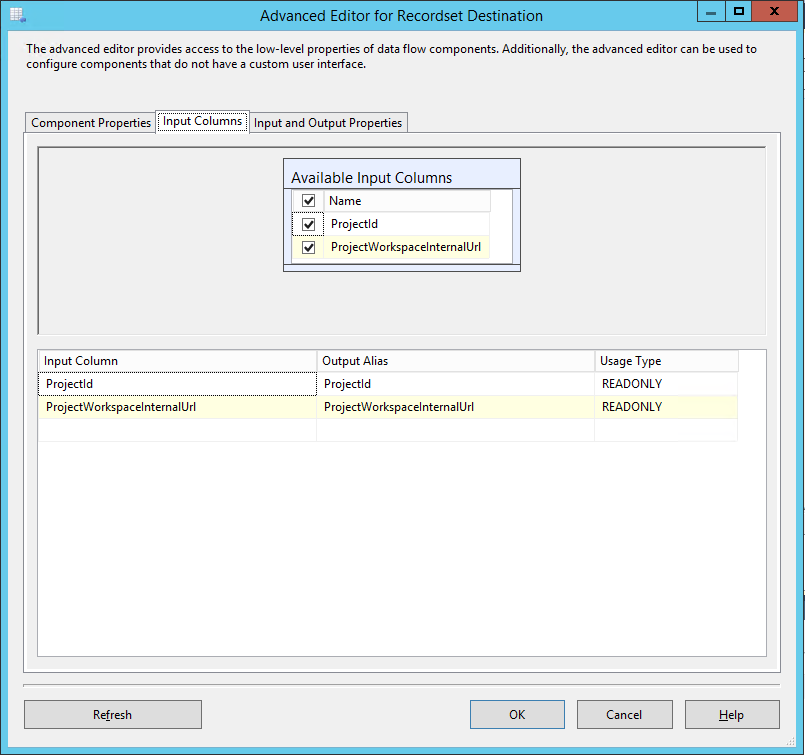
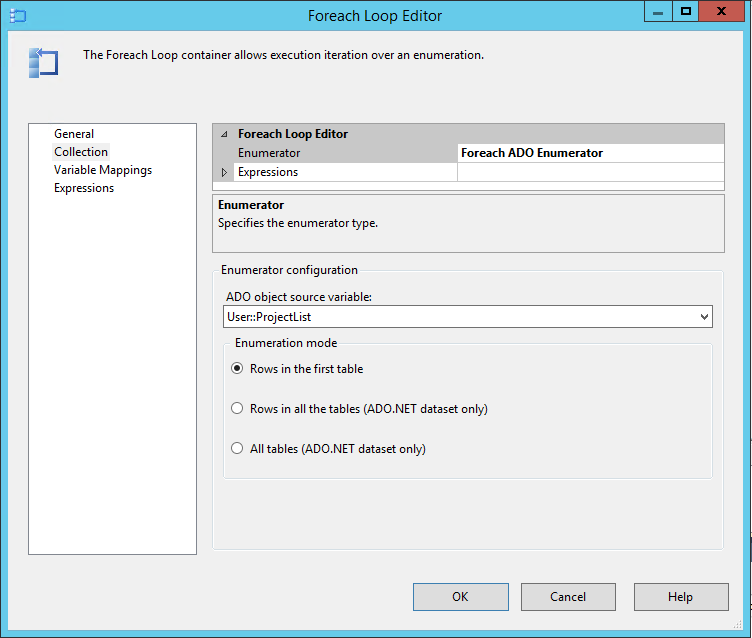
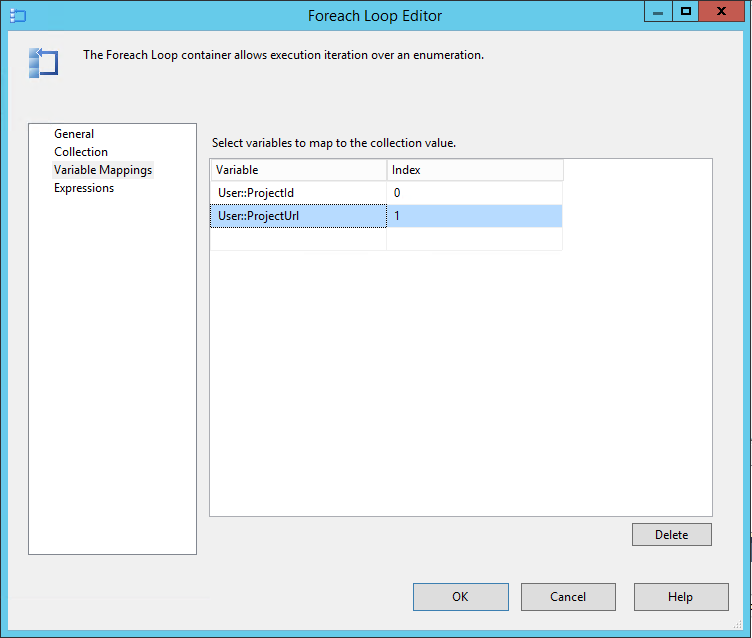
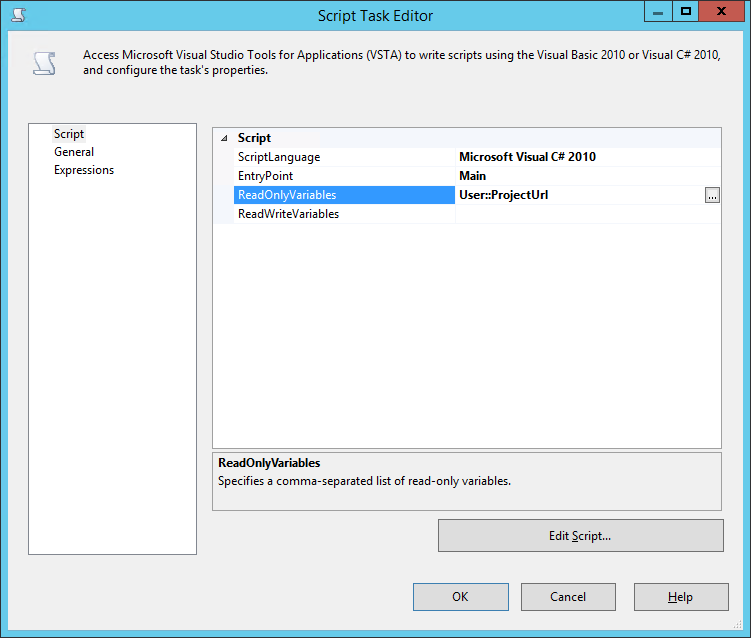


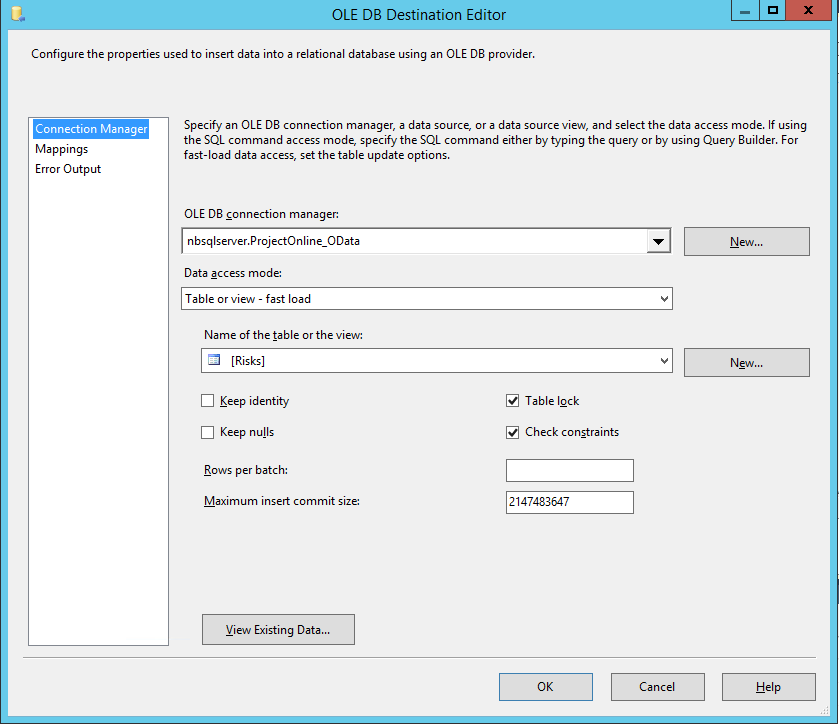
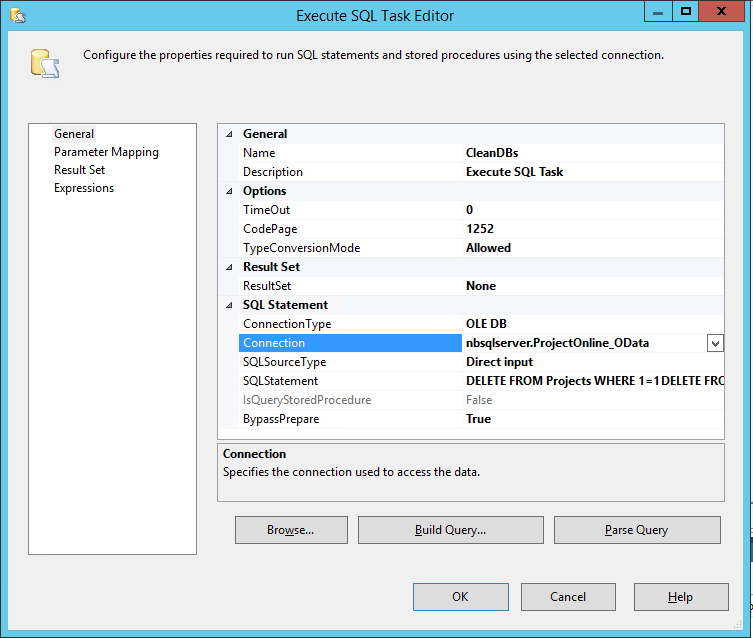

Great post Martin!
How do you get createby info with Odata When I use in a browser in work. When use the data flow I get an error. Is it possible the get createdby Info
Fantastic post, and a great follow-up from Paul Mather’s original article. I can see this being used to work around a lot of the limitations of OData feeds, such as dynamic date filtering for reports and, of course, custom list information in Project Sites.
Great Post but,
I receive the following error:
[OData Source [8]] Error: Cannot acquire a managed connection from the run-time connection manager.
You can help me?
Thanks !
Hi,
I haven’t seen this particular error but had a similar one recently when I hadn’t installed the SharePoint client DLLs:
http://www.microsoft.com/en-in/download/details.aspx?id=35585
HTH,
I receive the error ” Cannot acquire a managed connection from the run-time connection manager”, too.
Installing sharepoint client DLLs doesn’t solve it.
Can you help me?
Hi,
I’d recommend reviewing Paul Mather’s blog linked at the beginning of this article. Paul talks about all the things you need to install and prepare in order to do this.
Regards,
Using your example listed above but when iterating thru project sites Its not working. It only pulls the list data from the first site I’ve set in the Odata Connection Manager (OData_SharePointListData). Seem like I’m missing something.
Hi,
The trick is in the section: ‘Retrieve project data from OData’ in the article, in particular the for-each loop using the local variable which should be populated with the list of Project Site URLs.
If you’ve started with the full solution download then I’d suggest reviewing the steps above to ensure that at each point you are seeing the same thing (in particular when you can preview data).
I haven’t used this one for a while so something might have changed requiring an update so please let us know here if you find an issue in the solution.
Thanks,
Hi Bharat,
Were you able to resolve the issue you had? Even I am having the same issue, the list pulls data from the first site I’ve set in Odata connection manager. Can you please post your solution if you were able to resolve it.
Thanks,
Madhu
I’m trying to get createdby info using odata has list above. When I use Url list below it works great in a browser
but it doesn’t work in the Odata Source Data flow. Is it possible to get createdby using Odata?
my for each loop fails after the 9th successful SP list extract, it is complaining of a schema issue; but the fields it is complaining about are within the destination table?
What else can I check?
Also, can I ignore the ‘warning’?
Warning: 0x1 at ListDataIssues, OData Connection Manager: MicrosoftOnlineServicesAuthentication was set to True, but a Password value has not been set.
Error: 0x0 at GetSiteData, OData ListData Issues: External column IssueID not found in latest schema.
Error: 0x0 at GetSiteData, OData ListData Issues: External column IssueImpact not found in latest schema.
Error: 0x0 at GetSiteData, OData ListData Issues: External column Description not found in latest schema.
Error: 0x0 at GetSiteData, OData ListData Issues: External column DateResolved not found in latest schema.
Error: 0xC004706B at GetSiteData, SSIS.Pipeline: “OData ListData Issues” failed validation and returned validation status “VS_NEEDSNEWMETADATA”.
Error: 0xC004700C at GetSiteData, SSIS.Pipeline: One or more component failed validation.
Error: 0xC0024107 at GetSiteData: There were errors during task validation.
Great Post.
Is there any way to get the only the data which is changed instead of deleting the table at the time of sync?
Thanks
Dear Martin,
Thanks for your effort.
I have a question can we extend this method to retrieve data from custom lists in project workspace I mean user made lists say customlist1 and read its columns like column1 and column2 ??
Thanks in advance
We’ve got our package working but are have issues deploying it to our SQL 2012 server. Is seem within our foreach Loop Container we are getting a validation error 0xC020801F. Is anyone deploying this to a server? Please HELP
Thank you